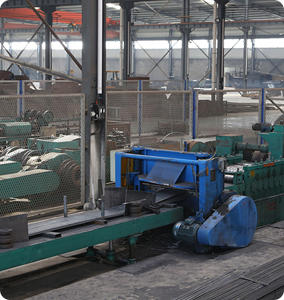Garden Mesh Climbing Plant Support The Ultimate Guide for Garden Enthusiasts
Gardening is a rewarding activity that nurtures not only plants but also our well-being. Among various gardening techniques, supporting climbing plants is essential for optimal growth and aesthetics. One of the most effective solutions for achieving this is using garden mesh climbing plant support. This article explores the benefits, types, installation techniques, and maintenance of garden mesh supports, allowing you to create a thriving vertical garden.
What is Garden Mesh Climbing Plant Support?
Garden mesh climbing plant support is a specialized structure designed to assist plants in climbing and sprawling in an organized manner. Typically made of durable materials such as nylon, plastic, or metal, these mesh supports provide a framework for climbing plants to anchor themselves. They offer an ideal environment for various types of vines, such as climbing roses, peas, cucumbers, and more.
Benefits of Using Garden Mesh
1. Space Optimization Garden mesh supports help maximize limited gardening space by allowing plants to grow vertically. This is particularly beneficial for urban gardeners with small balconies or patios.
2. Improved Air Circulation By keeping plants elevated and spaced, mesh support enhances air circulation around the foliage, reducing the risk of diseases caused by damp environments.
3. Easier Maintenance With climbing plants supported, maintenance tasks such as watering, pruning, and harvesting become much simpler and more efficient.
4. Enhanced Sunlight Exposure Vertical growth enables plants to receive better sunlight, which is crucial for photosynthesis and overall health.
5. Aesthetic Appeal Aesthetically, mesh supports create beautiful vertical displays that enhance the visual interest of any garden. With the right plants, they can serve as stunning backdrops or focal points.
Types of Garden Mesh Supports
1. Trellis Trellises are commonly used in gardens and can be made from wood, metal, or vinyl. They come in various shapes and sizes, providing versatile options for different plant types.
2. Netting Garden netting is a flexible support option that consists of mesh fabric. Often used for lighter vines, it can be easily anchored to walls or fences and is adaptable to various plant sizes.
garden mesh climbing plant support

3. Fencing Some gardeners utilize fencing as climbing support. Regular wooden or metal fencing can provide solid support for robust climbers such as beans and squash.
4. Cages For plants that require stronger support, such as tomatoes, cages crafted from metal wire are ideal. These cages allow the plants to grow upright while providing structure.
5. Custom Solutions For a unique garden, some gardeners opt to create custom mesh supports using repurposed materials like old doors, pallets, or even bicycle frames.
Installation Techniques
Installing garden mesh climbing plant support is straightforward and can be accomplished with basic tools.
1. Choose the Right Location Select a sunny spot in your garden where your climbing plants can thrive. Keep in mind the height and spread of the plants when positioning your support.
2. Install the Support Depending on the type of mesh support, you may need to secure it to a wall, fence, or use posts to anchor it in the ground. Ensure the support is sturdy enough to withstand the weight of mature plants.
3. Train Your Plants As the plants begin to grow, gently guide the stems toward the support. Some plants may require ties or clips for extra help, especially early in their growth.
4. Provide Nutrients and Water Once your climbing plants are securely on the mesh, maintain a regular regimen of watering and fertilizing to promote healthy growth.
Maintenance
Maintaining your garden mesh support is crucial for long-lasting effectiveness. Regularly check for damage, clean any debris or dead leaves, and prune the plants to ensure they grow within the structure. This not only keeps the garden looking tidy but also encourages healthy development.
Conclusion
Incorporating garden mesh climbing plant support into your gardening technique can transform your space and enhance your gardening experience. By optimizing growing conditions for climbing plants, you open the door to a visually stunning garden that thrives. Whether you opt for a trellis, netting, or custom solutions, the benefits of vertical gardening are undeniable. Embrace the potential of your garden and enjoy the beauty of climbing plants with proper support!
-
Why Galvanized Trench Cover Steel Grating Resists Corrosion
NewsJul.10,2025
-
The Versatility and Strength of Stainless Expanded Metal Mesh
NewsJul.10,2025
-
Load Calculations in Steel Grating Platforms
NewsJul.10,2025
-
Keeping Pets and Kids Safe with Chicken Wire Deck Railing
NewsJul.10,2025
-
Hole Diameter and Pitch for Round Perforated Metal Sheets
NewsJul.10,2025
-
Aluminium Diamond Mesh in Modern Architecture
NewsJul.10,2025
Subscribe now!
Stay up to date with the latest on Fry Steeland industry news.

